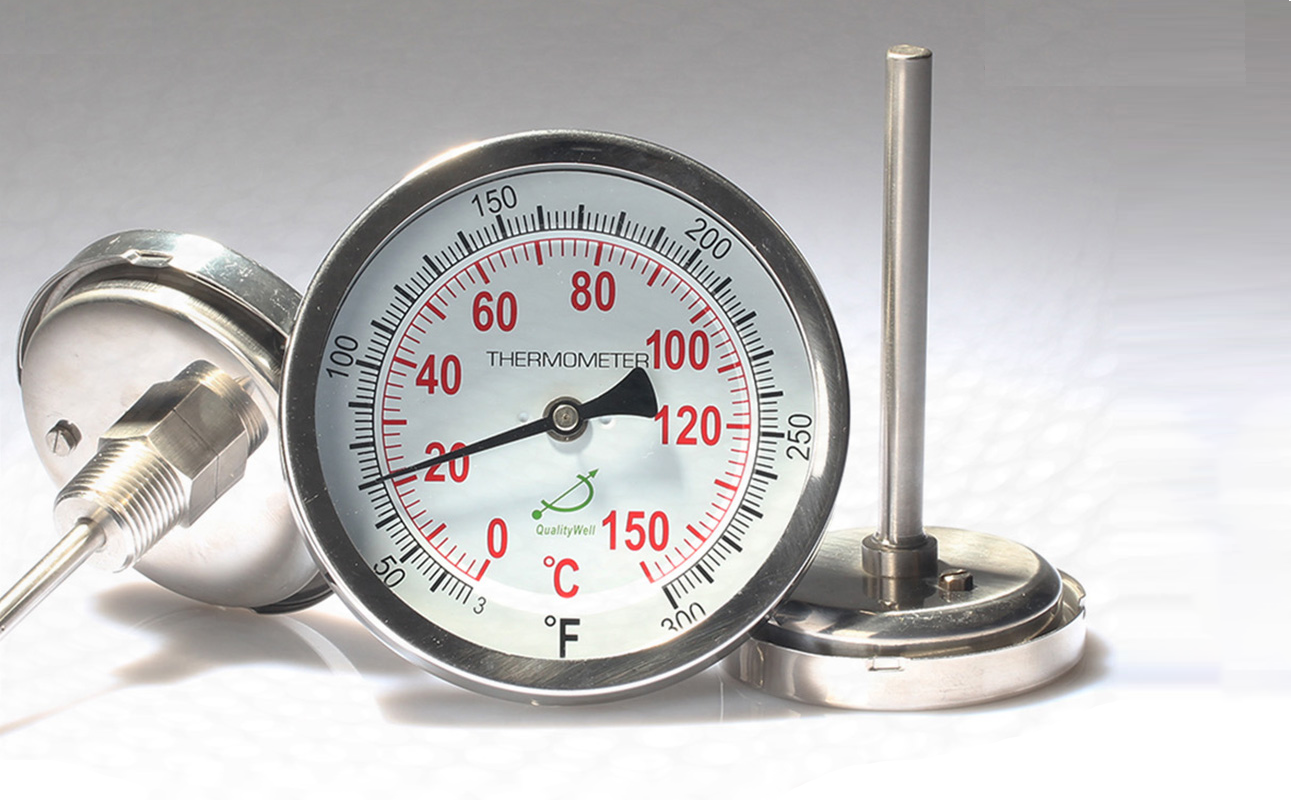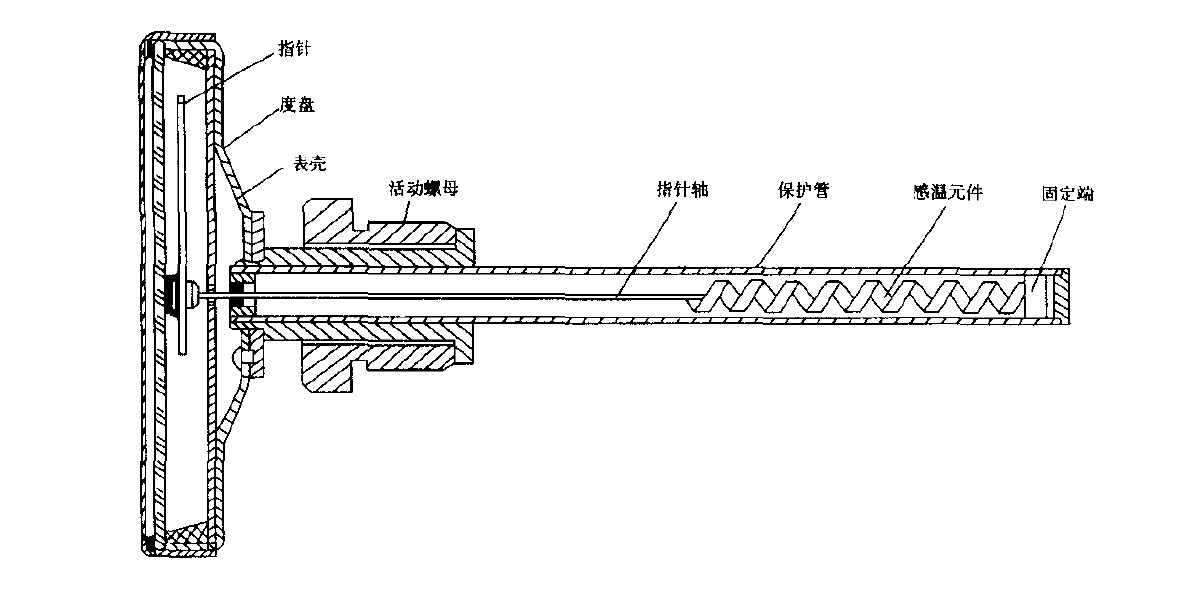
 Bimetal temperature sensor
Bimetal temperature sensor
Solids expand when heated. The amount of expansion of a solid sample with temperature rise depends on the size of the sample, the material made, and the amount of temperature rise.
The following formula relates linear expansion to temperature change:

Among them,
L=length of material after heating
L0=original length of material
α = Coefficient of linear expansion
Δ T=Temperature change
The following are typical of some common metals α Value:
● Aluminum=25 × 10 - 6 per degree Celsius
● Copper=16.6 × 10 - 6 per degree Celsius
● Iron=12 × 10 - 6 per degree Celsius
● Tin=20 × 10 - 6 per degree Celsius
● Titanium=8.5 × 10 - 6 per degree Celsius
As you can see, α The value of is very small. This means that the expansion (or contraction) of moderate temperature change is almost too small to be seen unless the sample size (l0) is large.
We can easily see the impact of thermal expansion on bridges and other structures. In these structures, expansion joints must be added in the design to prevent serious problems caused by environmental temperature changes.
However, for a hand size sample, the change in length from a cold day to a warm day will be microscopic.
One way to amplify the movement caused by thermal expansion is to bond two different metals, such as copper and iron, together. If we take two copper bars and iron bars of the same size, place them side by side, and then heat them to a higher temperature, we will see that the copper bar is slightly longer than the iron bar:

If we glue the two metal strips together, this differential growth will result in a bending movement that greatly exceeds the linear expansion. This device is called bimetallic strip:

This bending movement is sufficient to drive the pointer mechanism, activate the electromechanical switch or perform any number of other mechanical tasks, making it a very simple and useful primary temperature sensing element.

Figure: The bimetallic coil of the thermometer reacts to the heat of the lighter, unfolds it, and then rolls it up again when the lighter is removed.
Older home thermostats usually use this principle to indicate room temperature and turn on the electrical switch to control room temperature. The electric water heater unit still uses this type of equipment (usually in the form of a convex bimetallic plate) to sense the overtemperature. If the water temperature exceeds the preset limit, the heater power will be automatically turned off.
Bimetal thermometer
If the bimetallic strip is twisted to a very long length, it tends to unravel when heated. This torsional movement can be used to directly drive the pointer of the thermometer. This is the working principle of the thermometer shown in the figure below:


